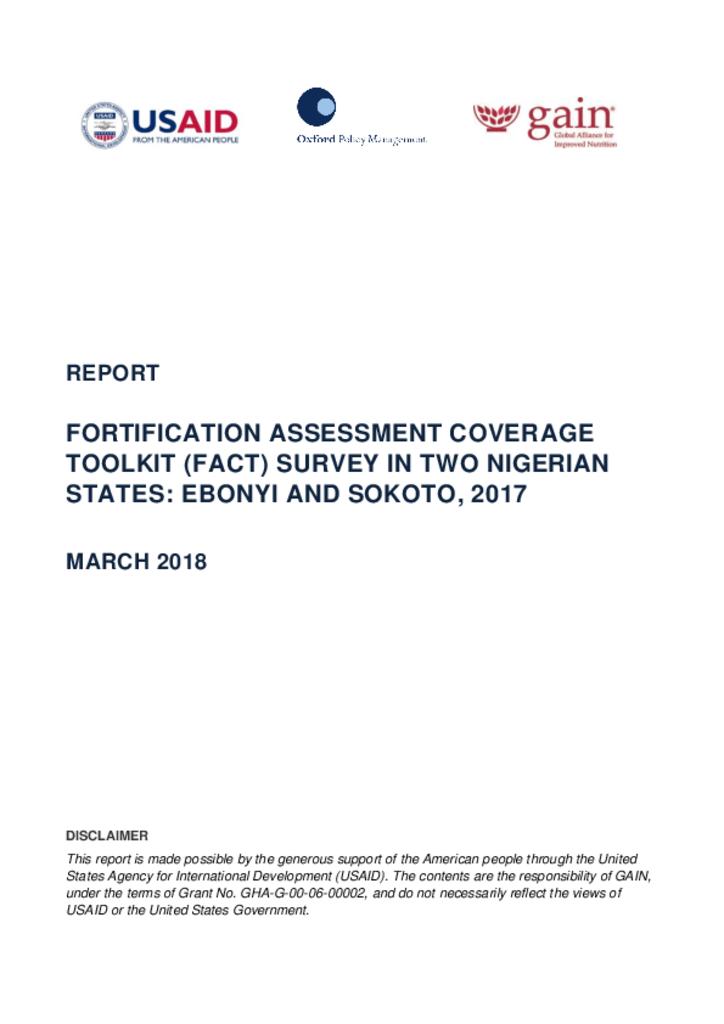In Nigeria, mandatory fortification of salt with iodine began in 1993, and mandatory fortification of sugar and edible oil with vitamin A and wheat flour, maize flour and semolina flour with multiple micronutrients, including iron and vitamin A has been mandated by law since 2002. According to the few studies conducted that have assessed the fortification programmes to date, coverage and quality have been variable by food vehicle.
In 2017, a cross-sectional survey, comprised of a household and market in two states (Ebonyi and Sokoto) was conducted using the Fortification Assessment Coverage Toolkit (FACT). The aim of the survey was to provide information on household coverage and consumption of fortifiable and fortified foods among children and women of reproductive age, and availability and quality of fortified foods from markets.
The survey results revelated that there is high household coverage and consumption of fortifiable salt and sugar, reasonably high coverage of fortifiable oil, and high consumption of fortifiable wheat flour and semolina flour indicate high potential for fortification of these foods to increase micronutrient intakes in the population in Ebonyi and Sokoto. For salt, currently most producers are fortifying to some extent and as a result the population is receiving sufficient iodine from fortified salt to fulfil nutrient requirements. For other food vehicles, there was low compliance with the national fortification standards for all food vehicles and consequently low contribution to dietary requirements for vitamin A (from fortifiable sugar and oil) and iron (from fortifiable wheat, maize and semolina flour). Based on current consumption patterns of these foods, there is potential for them to make meaningful contributions to vitamin A and iron intakes, but it would require significant improvements in the production and availability of appropriately fortified foods in markets. A meaningful improvement in monitoring and enforcement of fortified foods (both locally produced and imported) by regulatory authorities would be needed for the programme to reach its full potential. Finally, bouillon cubes, tomato paste, and rice were assessed as potential new fortification vehicles. Overall, all three foods had high coverage in a fortifiable form; in Ebonyi (100%, 95% and 83%, respectively) and to a lesser extent in Sokoto (99%, 45% and 40%, respectively). However, before adding new food vehicle to the fortification program further research is needed to assess the nutrient contribution from fortified foods as well as the total intake of the nutrient from all dietary sources to ascertain the extent to which the nutrient gap in the diet could be filled through current fortification efforts.
